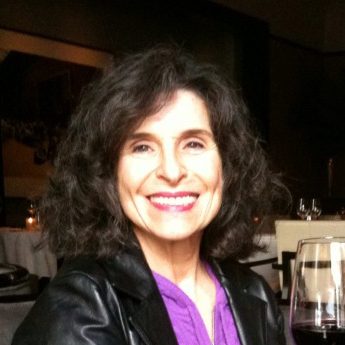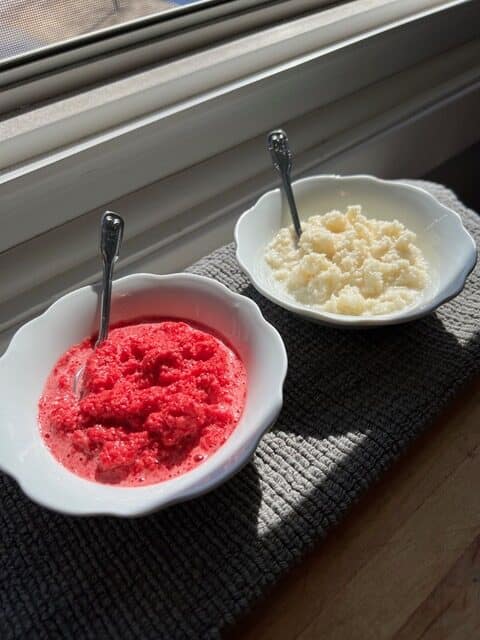Selma Brown Morrow, a food editor at Bon Appétit Magazine for 25 years and cookbook author, is a freelance tester and recipe developer for TV celebrity chefs, restaurants, and numerous publications.
 While it’s possible to write about food and never write a recipe, it’s somewhat like writing about works of art while never having created a work of art. Recipe development is about creating a recipe from an idea or “from scratch.” The recipe may be wanted for a cookbook, a restaurant menu, a special event, or a product intended for sale. The goal might be to replicate a dish without having a recipe or to simply enjoy the pure pleasure of being creative with food.
While it’s possible to write about food and never write a recipe, it’s somewhat like writing about works of art while never having created a work of art. Recipe development is about creating a recipe from an idea or “from scratch.” The recipe may be wanted for a cookbook, a restaurant menu, a special event, or a product intended for sale. The goal might be to replicate a dish without having a recipe or to simply enjoy the pure pleasure of being creative with food.
How Did You Get Started as a Recipe Developer?
First I had to learn to cook. Of all my tasks as a newlywed, cooking the meals was my favorite. Making a bed and dusting yielded the same results every time. But cooking became a creative, exuberant way to express myself.
Obsessively, I bought books, magazines, ingredients, products, utensils. I read everything, made everything, tried new restaurants. I gave weekly cooking classes, and had dinners several times a month. And I lived through the occasional disaster like serving blackened (but raw) duck to my husband’s boss and, once, rushing to the market between the appetizer and the main course.
I began to trust my own experiences rather than cookbooks. Once, in advance of a dinner, I spent three frustrating days making ‘moo shu’ pancakes out of Chinese cookbooks. Finally I just made them my own way and saw that my system was as legitimate as the experts’. During those hectic years I learned about prepping ahead, portions, presentation; about quality ingredients and techniques that worked for me. I developed my own style.
I catered (for little money alas, but valuable practice). Then, at one party, an appreciative guest who worked at Bon Appétit magazine convinced me to come in for an interview. I was hired. And just like that, I was a professional. Every day I got to test recipes from chefs, home cooks, restaurants, and authors. Every day I learned so much.
Testing really honed my appreciation for the details that make a recipe successful; for the process that accurately describes how a bunch of ingredients became a ricotta torte or a Belgian carbonnade. It’s all about making sure that everyone who cooks the recipe will get the same results as I got in the test kitchen. So in testing-speak, it’s not ‘a medium onion, chopped’; it’s ‘1 8-ounce onion, chopped (2 cups).’ Or ‘1 cup grated cheese’ became ‘1 cup (packed) coarsely grated extra-sharp cheddar cheese (4 ounces).’ The questions to answer are: Is the roast really medium-rare in 1 hour at 400°F? What is the internal temperature at medium-rare? Is it a triangle-tip roast? A center cut rib roast, on or off the bone? Does it rest 15 minutes before slicing? Testing recipes is not about spontaneous creativity, but serious attention to detail.
While that same discipline pertains to developing recipes — because the goal is still to help a reader, manufacturer, or friend reproduce the dish successfully — there’s a crucial difference. In recipe testing, the author makes most of the decisions. Which ingredients to use and how to put them together: garlic, rosemary, leek, shallot? beef, lamb, pork? sauté, deep-fry, braise, boil? A tester makes adjustments but ends up producing the author’s vision.
In recipe developing, I have to make all of those decisions. It’s ‘the buck stops here’ scenario. Thank goodness testing gave me the confidence to have my own voice. After three years at Bon Appétit, I wrote my first article, an array of international cheesecakes. To create those recipes, I compiled lists of flavors and ingredients unique to each country, then fashioned a recipe that evoked a certain dish or flavor profile. The unmistakable Greek cheesecake, for example, was flavored with honey and lemon, was encased in phyllo, and had a baklava top-crust. The chocolate-cherry one was a take-off on a German black forest torte; the Irish one was an Irish coffee in cheesecake form. I gave myself a familiar concept to anchor the recipe, then put my own spin on it.
Over my 20-plus years at Bon Appétit, I continued testing, of course, but also authored dozens of my own articles. I wrote a cookbook for Williams-Sonoma in 2002. Catered some; taught some; kept my skills sharp in a dependably creative environment.
But that was then. The magazine moved to New York in 2011. And I have since become a free-lancer. Now I send out resumes, network, and sometimes get lucky when friends and old colleagues send jobs my way. Some of the recipe development I’ve done as an independent include articles for other food magazines, recipe work for a TV chef, recipes for barbecue books, for products-to-be, and pamphlets for products-that-already-are. I’ve also done some consulting and development for restaurant menus.
With each job, the process of getting my recipe to the client differs. When the client is nearby, I drive the dish over for a taste-test. Often, I just email the recipes and they are tested at the client’s own facilities. Occasionally, I overnight a product with a written recipe so the client can taste what I made and then use the recipe to reproduce the dish. The good news is that despite the constant challenge to reach it, there is a market for my expertise.
It’s not all good news though. I developed a product of my own and the idea was stolen (and then successfully distributed by the crooks; ugh!). I pitched ideas for TV cooking shows with no success. I applied to advertising agencies to develop recipes for their food clients, with little response. But because my hobby became my career, I continue to be interested in and fulfilled by my work. In other words, I still like what I’m doing.

